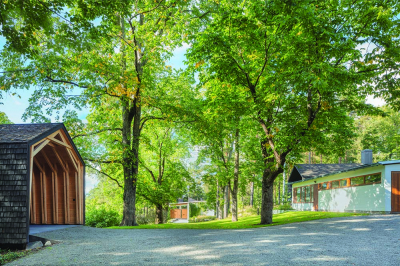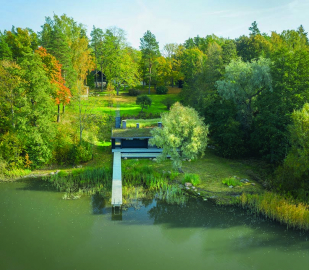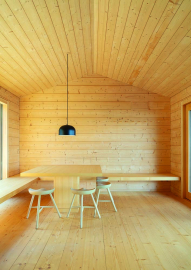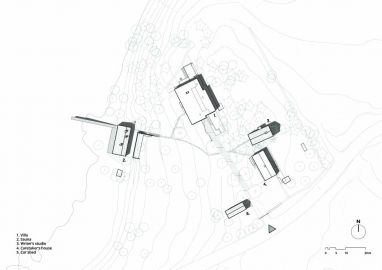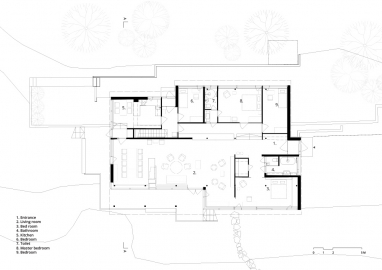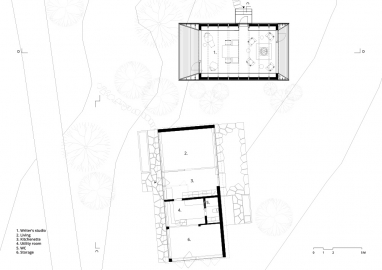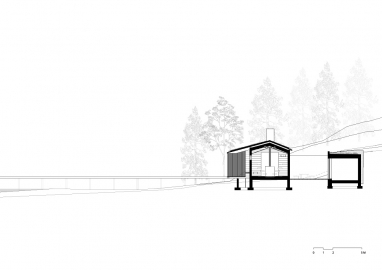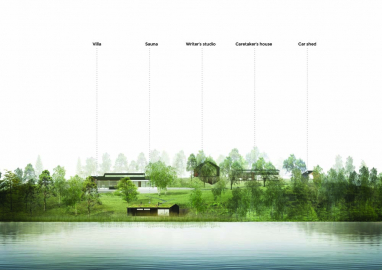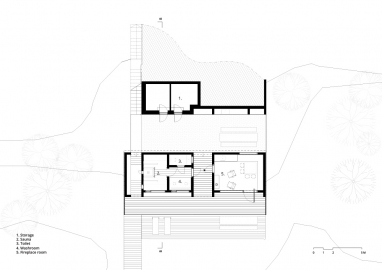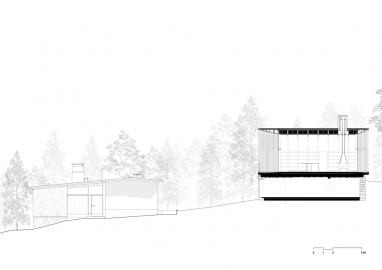Villa Koivikko
The newly renovated Villa Koivikko is an excellent example of how new buildings can successfully be added to the context of a historically and architecturally valuable landmark. It creates something entirely new while simultaneously complementing the existing architecture and helping it maintain its functionality in face of the changing times.
Located just outside of Helsinki, Villa Koivikko provides an excellent set up for remote work and a life surrounded by nature. The modernist villa and the caretaker’s house by Aarne Ervi, a respected master of functionalism in Finland, were restored and three wooden buildings were added to complement the brick buildings from 1958. The composition of the new buildings on the sloping plot by a lake respects Ervi’s original intention to leave open the view to the lake while directing the attention to the villa mid-way up the hill. The new buildings have a strong sculptural character, and their material qualities highlight the modernist buildings. With their natural materials, dark outer shell, pitched roofs and traditional building methods, they stand in stark contrast to the strong horizontal lines, white surfaces, flat roofs and modern building techniques of Ervi’s buildings.
The project addresses the challenge of taking care of the heritage of modern architecture and responds to the quest for new solutions that allow the modernist buildings to meet the contemporary needs. Representing the forward looking ideal of the 1950s, the villa was equipped with the most advanced technical systems of the time. Despite the deterioration of many of the solutions embraced by Ervi, the villa has not lost its strong aesthetic appeal. Following a detailed study of the original drawings, the landmarked buildings were restored and the technical systems updated. The living space in the caretaker’s house was expanded and a new geothermal heating system was installed. The built-in garage was replaced by a free-standing car-shed, a new sauna was built in place of the old one, and a writer’s studio was built on top of the old stone cellar. The contemporary additions highlight the special qualities of the original design. With a strong character of their own, the new buildings enter into dialogue with Ervi’s architecture. Embracing the relationship between architecture and landscape, OOPEAA’s design provides a new sense of balance to the experience of the estate.
The new buildings are made of wood, a natural material that ages well and is both ecologically sustainable and long lasting. Clad with traditional tarred shingles, the car-shed and the writer’s studio take on a strong presence. Yet, treated with dark natural paint or tar, they withdraw from the center of attention almost blending in with nature. Highlighting the exposed structure, the light color of spruce in the interiors gives them a sense of warmth. The detailing is either of steel with a black matte finish, or of copper. The sauna is built with logs with a tailormade joint and has a green roof. Under the steep sloping hill, an embankment retaining wall keeps the landmasses from sliding down under rain. Technical facilities and an outdoor barbeque kitchen are placed inside the wall, and a garden is formed between the concrete embankment wall and the wooden log wall of the sauna. The large windows of the fireplace room create a sequence of visually connected spaces. A wooden pier forms a pathway to the lake for swimming. A covered corridor-like space links it with the path leading up to the villa and offers a place for storing the wood and loading the wood-burning stove of the sauna.

